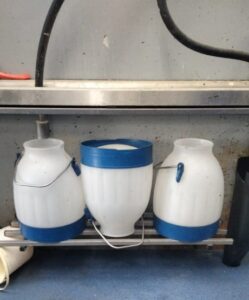Cow behavior in the barn.
A little reflection in the new year. We all know this, but checking whether it really works is sometimes good. Grab 4 moments of the day for this check.
If 14 hours a day lying down is optimal for a cow, then at least half and preferably 60% of the cows should lie down. And also important: 60% have to ruminate.
So 60% of the cows have to lie down, 10% walk near or around the VMS and 30% are at the feed fence or walk with a goal.
Pay particular attention to whether cows hang around, stand in the layingboxes for a long time and, for example, seem reluctant to lie down or go to a certain part of the barn or avoid to go along a narrow path or walking past a dominant cow .
How much influence do the feeding moments or “cow control” moments, walking between the cows, have on this distribution? Does it remain quiet in the stable !
And of course box comfort, sprinkle (sawdust) moments, walkways, ….
Then you have already measured a large number of Cow Signals!
| Date |
Time of day |
Laying in the boxes |
Standing (half) in boxes |
Walking round
(not near VMS) |
Eating |
Ruminating |
|
|
|
|
|
|
|
|
|
|
|
|
|
|
|
|
|
|
|
|
|
|
|
|
|
|
|
|
|
|
|
|
|
|
|
|
|
|
|
|
|
|
|
|
|
|
|
|
|
|
|
|
|
|
|
|
 Get in the habit of cleaning the jugs that are not being used and simply place them
Get in the habit of cleaning the jugs that are not being used and simply place them